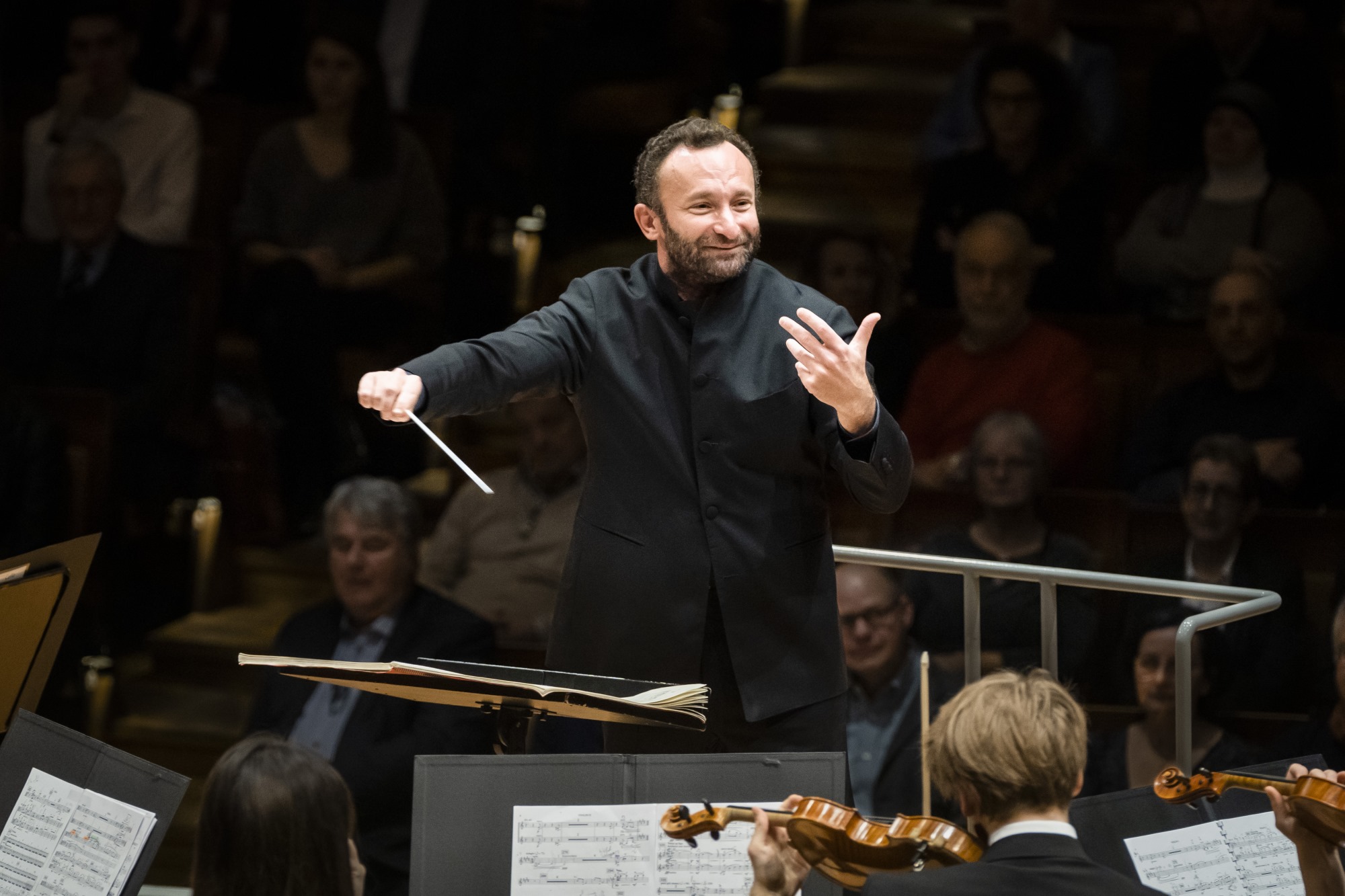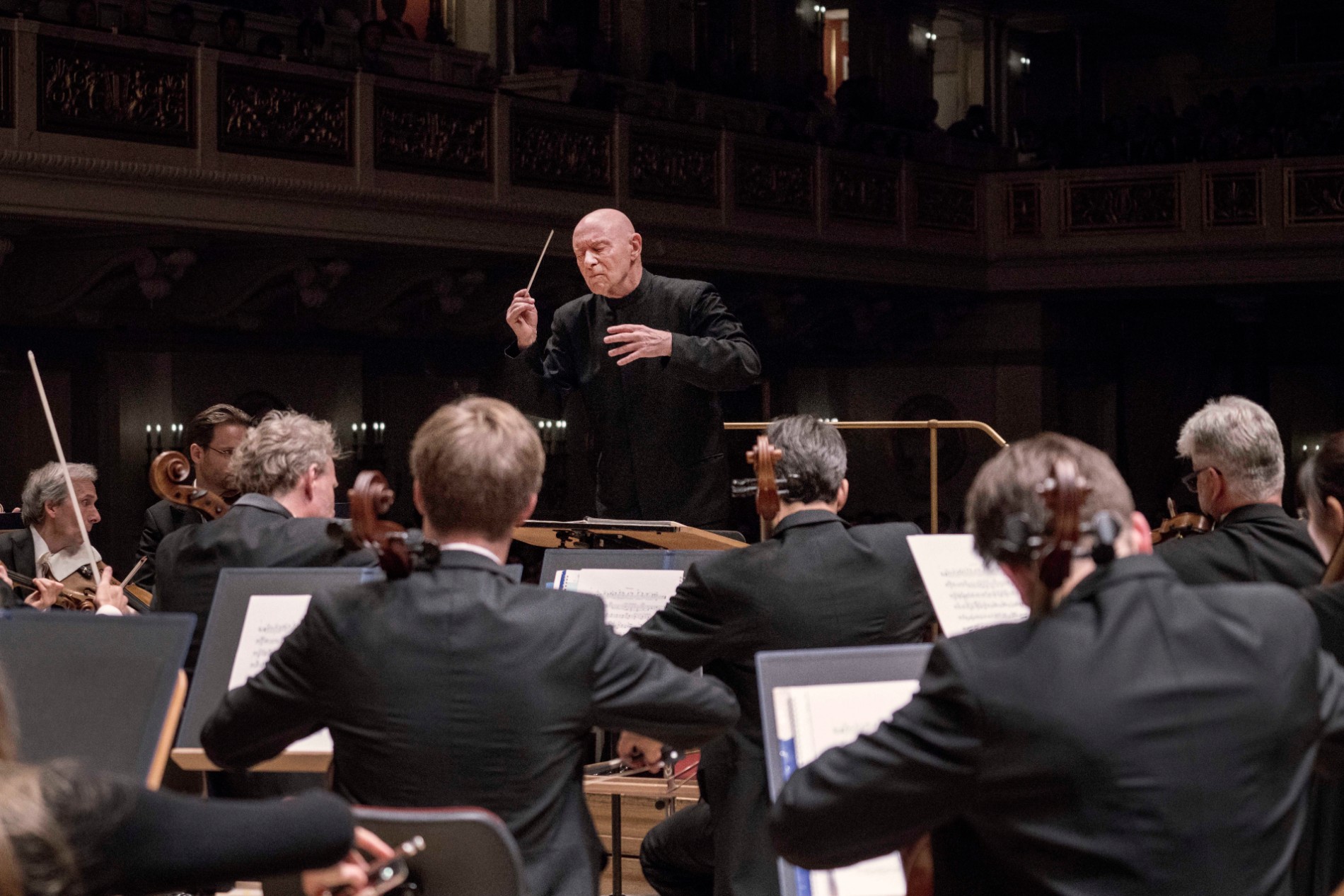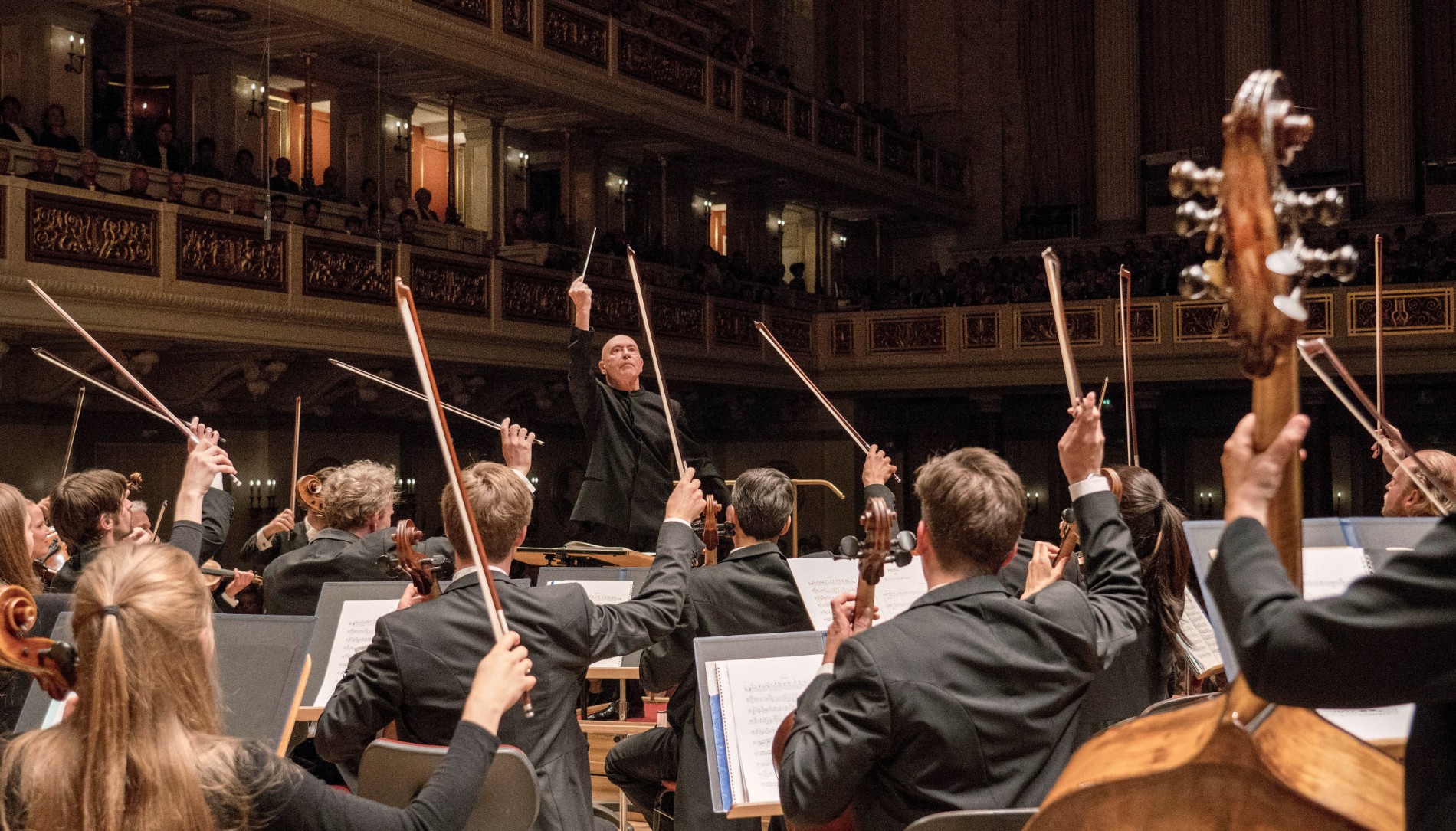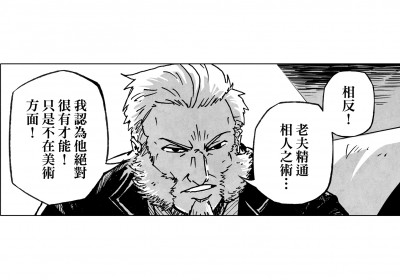
(翻譯內容以英文版本為準)
柏林愛樂樂團(Berliner Philharmoniker)是享譽全球的管弦樂團,但歐洲以外的古典音樂迷或許並不知道,德國首都柏林同時孕育出不少其他出色的管弦樂團。柏林音樂廳樂團(Konzerthausorchester Berlin)具備無可挑剔的藝術創造力,正正是其中一顆滄海遺珠。
無獨有偶,上述兩隊樂團的新首席指揮同時在 2019 年 8 月就職:佩特連科(Kirill Petrenko)與埃申巴哈(Christoph Eschenbach)分別展開他們在柏林愛樂樂團與柏林音樂廳樂團的任期。
埃申巴哈早已被視為古典音樂界的老前輩,培養出郎朗等無數音樂奇才、以鋼琴家和指揮家的身份,錄製無數備受讚譽的唱片、亦曾指揮全球多個著名樂團;另一邊廂,佩特連科則以行事低調見稱,鮮有接受媒體採訪之餘,亦甚少參與商業唱片製作。事實上,佩特連科的來去無蹤為德國人帶來一個小小笑話:
「佩特連科在哪裡?」
「就在樂譜裡!」
佩特連科全心全意將心思傾注於音樂之中,以最忠實的方式將作曲家的思想與創作意圖呈現。無論是貝多芬、華格納還是史特拉汶斯基,聽過佩特連科演繹自己的作品,一定會在遠處默默點頭道是!
8 月 23 日,佩特連科的就職音樂會於宏偉的柏林愛樂廳揭幕。正如我在早前的專欄提及過,音樂會的門票在網上甫開售不到一分鐘便售完。音樂會當日,觀眾猶如置身奧斯卡頒獎禮一樣,以整齊的西裝領帶及晚禮服配襯端莊的音樂廳。音樂廳門口鋪置紅地氈,恭迎德高望重的政經名人。
是次音樂會以伯格的「露露」組曲掀起序幕。我向來無法接受這種無調而古怪的音樂,但這次卻是例外。他的演繹充滿新鮮感,刺激同時具戲劇性,細膩得像每個音符都具備意義。佩特連科擅長觀察樂譜內的細微差別,將組曲內詭秘、恐怖及可愛的部分通通鮮明地呈現出來,帶領觀眾遊走於情感光譜的各個面向。直到中場休息,我方明白佩特連科之才華洋溢,令這種向來被我拒諸門外的樂曲變得如此動聽悅耳。
而下半場的演出可說是貝多芬「第 9 交響曲」的最佳演繹。自第一個音符起,佩特連科已透過前所未有的溫度、感情與力度,抓住全場的注意力。他透過音樂描繪出生命之美,強調博愛的重要性,將樂器與合唱之聲糅合出崇高的音色。獨唱者熱情地將精準的嗓音帶到音樂廳中,佩特連科為樂曲注入新鮮的色彩與情緒,以不同質感呈現出無數戲劇化的層次。
佩特連科的演繹,加上樂手與合唱團精湛的技藝,足以讓全場觀眾站立鼓掌,有的甚至感動得熱淚盈眶。我可以肯定這場音樂會將會深刻烙印在每個柏林人的心中。

一週後的 8 月 30 日,埃申巴哈同樣以戲劇化的音樂,展開柏林音樂廳樂團的新樂季。他的節目只有一首作品 —— 馬勒龐大的「第 8 號交響曲」。此曲以「千人交響曲」見稱,雖然只是誇大其辭,但這首作品通常需要近 500 位歌手與樂手擠在台上合奏。
事實上,我亦曾以敲擊樂手的身份演出此曲。今年 2 月,我有幸參與大學管弦樂團在柏林愛樂廳與柏林音樂廳的表演,因此更了解此曲的複雜性與難度。然而,交響樂經驗豐富的埃申巴哈憑藉對馬勒的專門知識及對曲譜的熟練,無比自信地輕鬆駕馭此交響曲。最重要的是,埃申巴哈著重管弦樂的層次,選擇彈性多變的彈奏與其音調色彩的控制,都讓樂曲顯得更流暢自然。
馬勒的「第 8 號交響曲」主題環繞在愛的力量中獲得救贖。兩個樂團演奏的交響曲同時表達了愛、友誼及在社會中互相扶持與融合的重要性,而我絕不相信這只是巧合。或許,全球的政客都應該觀賞一下這些交響樂曲,了解一下如何重新團結支離破碎而二元對立的人文社會。
Berlin’s New Musical Era

The Berliner Philharmoniker is widely recognised as the greatest orchestra in the world, but non-European audiences might not know that the German capital is also home to several other leading orchestras, most notably the Konzerthausorchester Berlin, an orchestra with an impeccable reputation and renowned for its artistic creativity.
An historic occasion arose in August 2019 when both of these Berlin orchestras, for the first time in history, inaugurated their new Chief Conductor at the same time: Kirill Petrenko for the Berliner Philharmoniker and Christoph Eschenbach for the Konzerthausorchester Berlin. Eschenbach has long been seen as a doyen in the classical music industry, having nurtured numerous talents including Lang Lang, made numerous critically acclaimed recordings as both a pianist and a conductor and provided musical leadership to various orchestras across the globe. On the other hand, Petrenko is renowned for his avoidance of the media spotlight, and had never been keen on interviews and commercial recordings. He was always solely and comprehensively devoted to the music and to realising the wishes and intentions of the composers. Whatever he conducted, be it Beethoven, Wagner or Stravinsky, you could always sense the composers nodding their approval from afar. In fact, there is a common joke in Germany:
“Where is Kirill Petrenko?”
“In the score!”
Petrenko’s inaugural concert with the Berliner Philharmoniker took place in the grandiose Philharmonie on August 23rd, and as I mentioned in a previous article, tickets were sold out almost immediately upon going on sale. This evening was a dignified occasion, with everyone (including this columnist, who usually went to concerts in just smart casual) in formal attire, men in suits or black ties and women in elegant dresses. For a moment, I thought this was the Academy Awards. There was a red carpet at the concert hall’s entrance, welcoming important political, industrial and cultural figures, influential politicians and key financial patrons.
The concert began with Alban Berg’s Lulu Suite, and usually, I could not stand this sort of atonal and quirky music, but this was an exception. Petrenko’s interpretation was fresh, exciting and dramatic; each musical note was given a purpose; and Petrenko observed every nuance and detail in the score. The music was mysterious, frightening, welcoming and loving at different times, taking audiences through a rainbow of emotions. At the intermission, I realised that compositions like this could be an absolute delight and pleasure to listen to, but only with a conductor in the calibre of Petrenko.
The second half featured arguably the greatest work in the German musical canon: Beethoven’s phenomenal Ninth Symphony. From the first note, Petrenko captured the attention of the fully-packed hall and kept audiences on the edge of their seats, with a degree of warmth, affection and intensity hitherto unseen in any concerts. Petrenko depicted the beauty of life, underlined the importance of universal brotherhood as well as amalgamated the mix of instrumental sounds and choral voices sublimely. Indeed, he invested the piece with fresh colour and touching sentiments and married emotion and texture on numerous dramatic levels, while the vocal soloists delivered their parts with absolute precision and thrilling passion. It was not at all surprising that audiences, many in tears of joy, rose as one as the concert ended to give Petrenko, his players and the singers a most worthwhile standing ovation. I feel certain that this concert will be embedded in the minds of Berliners in the years to come.

A week later, on August 30th, Eschenbach opened the Konzerthausorchester’s new season in a similarly dramatic fashion. His programme featured only one piece – the gigantic Eighth Symphony by Gustav Mahler, commonly known as the “Symphony of a Thousand”. While this is recognised as somewhat an exaggeration, it often takes more than 500 performers all packed on stage in performing this choral work.
Back in February this year, I had the privilege to perform this symphony as a percussionist with my university’s orchestras in both the Philharmonie and the Konzerthaus, and hence fully appreciated the complexities and difficulties in performing this work. However, Eschenbach, with all his experience, expertise in orchestral and choral music, as well as his familiarity with the score, dealt with all challenges with aplomb. Not only did he ensure that the performance registered as music first and foremost, his focus on orchestral layering, choice of very flexible tempi and control of tone colours all worked a treat, allowing the music to flow and to breathe naturally.
Mahler’s Eighth Symphony centres on the theme of redemption through the power of love, and I do not believe that it was a mere coincidence that both orchestras began a new chapter in their history with works calling for more love, friendship, mutual support and collaboration in societies. Maybe politicians around the world should really look into both of these symphonies for ideas on how to unite an ever more fragmented and polarised humanity.














